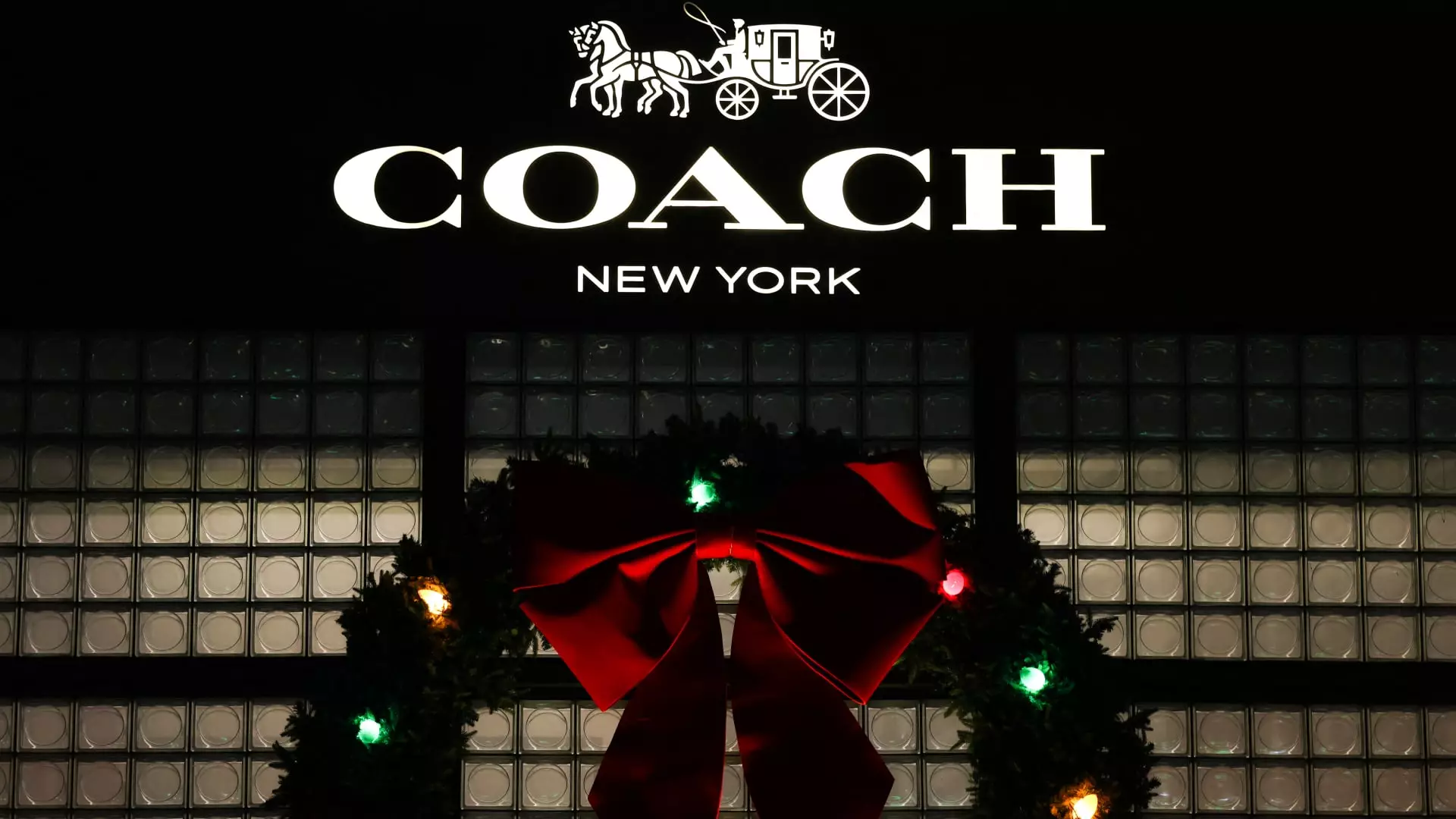In the ever-evolving landscape of luxury fashion, Tapestry, the parent company of the renowned brand Coach, has recently made waves on Wall Street by reporting impressive sales figures for the holiday quarter. The company’s stock surged by approximately 12% following its announcement that it had exceeded sales expectations, which were bolstered by a revised full-year revenue forecast. This surge not only reflects Tapestry’s financial resilience but also serves as an interesting case study in effective brand management and market positioning amidst the challenges faced by its peers.
Tapestry has revised its revenue expectations upward to over $6.85 billion for the full fiscal year, marking a 3% increase from the previous year’s figures. The company’s new earnings per share estimate ranges from $4.85 to $4.90, significantly higher than its earlier projection of $4.50 to $4.55. This upward revision was unexpected and illustrates the company’s robust positioning, particularly through its flagship brand, Coach. Earnings reports indicated that the fashion house’s revenue surged by 11% year-over-year, which stands in stark contrast to the struggles faced by competitor Capri Holdings.
Interestingly, Capri’s recent financial disclosure highlighted significant declines in sales from its luxury brands, Versace and Michael Kors, prompting its CEO to acknowledge miscalculations in market strategy. The juxtaposition of Tapestry’s triumph against the backdrop of Capri’s challenges underscores the critical importance of aligning product offerings with consumer expectations and current market trends.
Tapestry CEO Joanne Crevoiserat emphasized the importance of innovation, relevance, and value in attracting and retaining consumers. These principles resonate strongly in today’s selective marketplace, where buyers are increasingly discerning about their spending. The company’s ability to connect with consumers—especially younger demographics—has proven advantageous. In a recent earnings call, Crevoiserat revealed that Tapestry successfully attracted approximately 2.7 million new customers in North America during the quarter, with a significant proportion of these being Gen Z and millennials. This demographic shift highlights Tapestry’s potential for future growth as they continue to engage consumers who are less brand-loyal and more focused on value.
The focus on product innovation is particularly critical here. Best-selling items such as the Tabby shoulder bag and the New York collection indicate that Tapestry recognizes the changing preferences of consumers and is agile enough to adapt. By curating a selection of styles that resonate with new and younger shoppers, Tapestry is not only enhancing brand visibility but also fostering long-term customer loyalty.
In a strategic assessment of its market reach, Tapestry reported a remarkable 45% increase in revenue from the European market during the holiday quarter—a promising sign of untapped potential. While North America continues to account for nearly 70% of Tapestry’s sales, the burgeoning European presence suggests that the brand is well-positioned for international growth. With lower sales volumes and fewer established customers in Europe, Tapestry views this market as a substantial opportunity for expansion.
This analysis is compounded by the striking performance in regions like Greater China, where revenue saw a modest increase of 3%. Understanding the global dynamics of brand perception allows Tapestry to develop region-specific strategies tailored to consumer behavior across different markets. The company’s decision to approach potential mergers and acquisitions with caution indicates a focus on solidifying current brand performances before expanding its portfolio further—a wise move in an unpredictable economic environment.
While Coach shows a promising trajectory, Tapestry’s efforts to revitalize the Kate Spade brand remain critical to the broader portfolio’s overall health. With the recent appointment of Eva Erdmann as CEO for Kate Spade, Tapestry aims to implement significant changes to improve brand performance. The strategy involves reducing the variety of handbag styles and focusing on developing flagship products that can establish a strong market presence. By minimizing promotional tactics and emphasizing quality, Tapestry seeks to reshape consumer perceptions and position Kate Spade for sustainable growth.
As the company endeavors to rebuild the Kate Spade brand, this thoughtful approach demonstrates Tapestry’s understanding that brand identity and consumer trust are cultivated over time. With a renewed focus on product excellence and customer engagement, Tapestry is taking the necessary steps to ensure that it remains a formidable player in the competitive luxury market.
Tapestry’s recent performance serves as a testament to its strategic acumen in navigating the complexities of the fashion industry. By focusing on innovation, market engagement, and brand revitalization, Tapestry exemplifies how companies can thrive despite broader industry challenges, ultimately paving the way for sustained success in the luxury marketplace.

